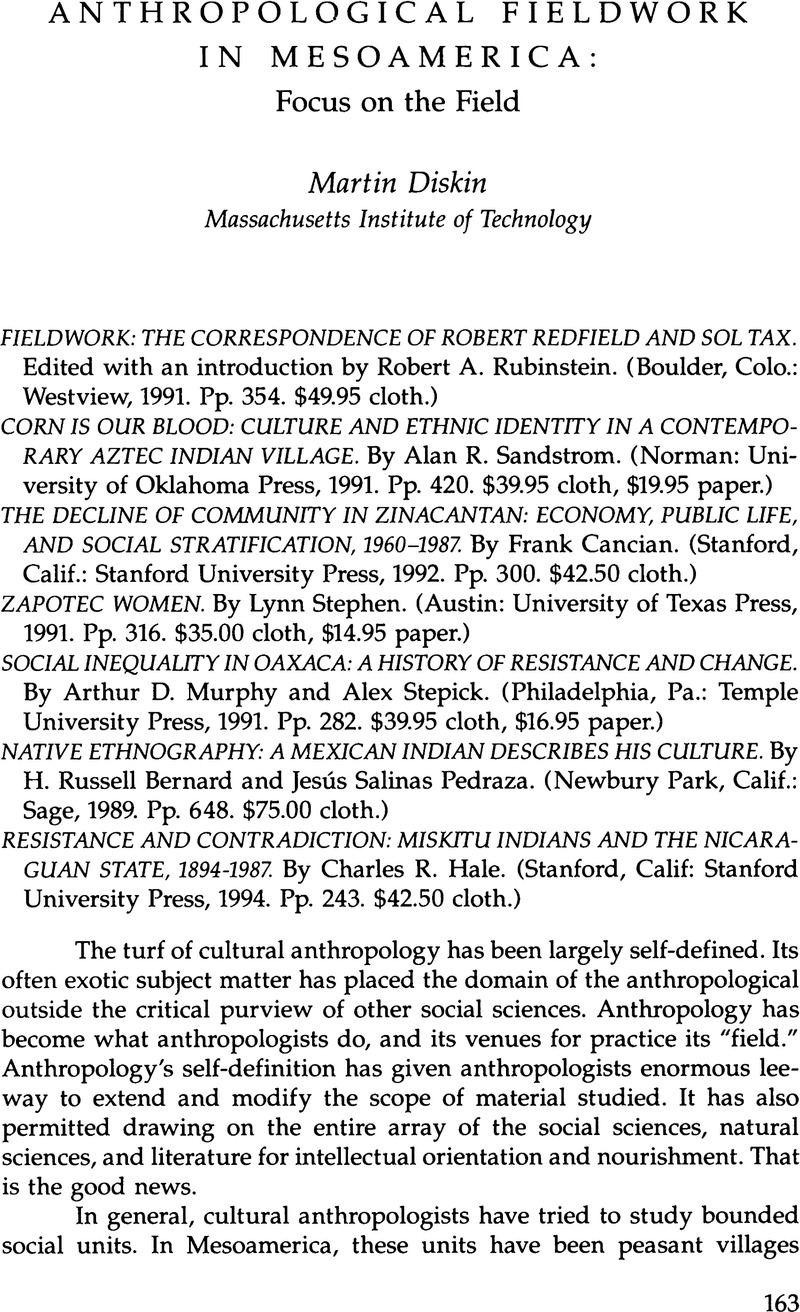No CrossRef data available.
Published online by Cambridge University Press: 05 October 2022

1. Evon Z. Vogt, “Chiapas: Rebellion, Ritual, and the Supernatural,” Boston Globe, 31 May 1994, p. 15.
2. James C. Scott, The Moral Economy of the Peasant: Rebellion and Subsistence in Southeast Asia (New Haven, Conn: Yale University Press, 1976); and Scott, Weapons of the Weak: Everyday Forms of Peasant Resistance (New Haven, Conn.: Yale University Press, 1985).
3. In this regard, see James Clifford, The Predicament of Culture: Twentieth-Century Culture, Ethnography, Literature, and Art (Cambridge, Mass.: Harvard University Press, 1988); M. J. Fischer and George E. Marcus, Anthropology as Cultural Critique (Chicago, Ill.: University of Chicago Press, 1986); and Renato Rosaldo, Culture and Truth: The Remaking of Social Analysis (Boston, Mass.: Beacon, 1989).
4. Miguel Alberto Bartolomé, Narrativa y etnicidad entre los chatinos de Oaxaca, Cuadernos de los Centros Regionales, (Oaxaca: Centro Regional de Oaxaca, Instituto Nacional de Antropología e Historia, 1979); and Alicia Barabas y Miguel Alberto Bartolomé, El Rey Conghoy: tradición mesiánica y privación social entre los Mixes de Oaxaca (Oaxaca: Centro Regional de Oaxaca, Instituto Nacional de Antropología e Historia, 1984).
5. For example, see Jonathan Fox, The Politics of Food in Mexico: State and Social Mobilization (Ithaca, N.Y.: Cornell University Press, 1992).
6. See Eric Wolf, “Closed Corporate Peasant Communities in Mesoamerica and Java,” Southwestern Journal of Anthropology 13 (1957):1–18; and William G. Skinner, “Chinese Peasants and the Closed Community: An Open and Shut Case,” Comparative Studies in Society and History 13 (1971):270–81.